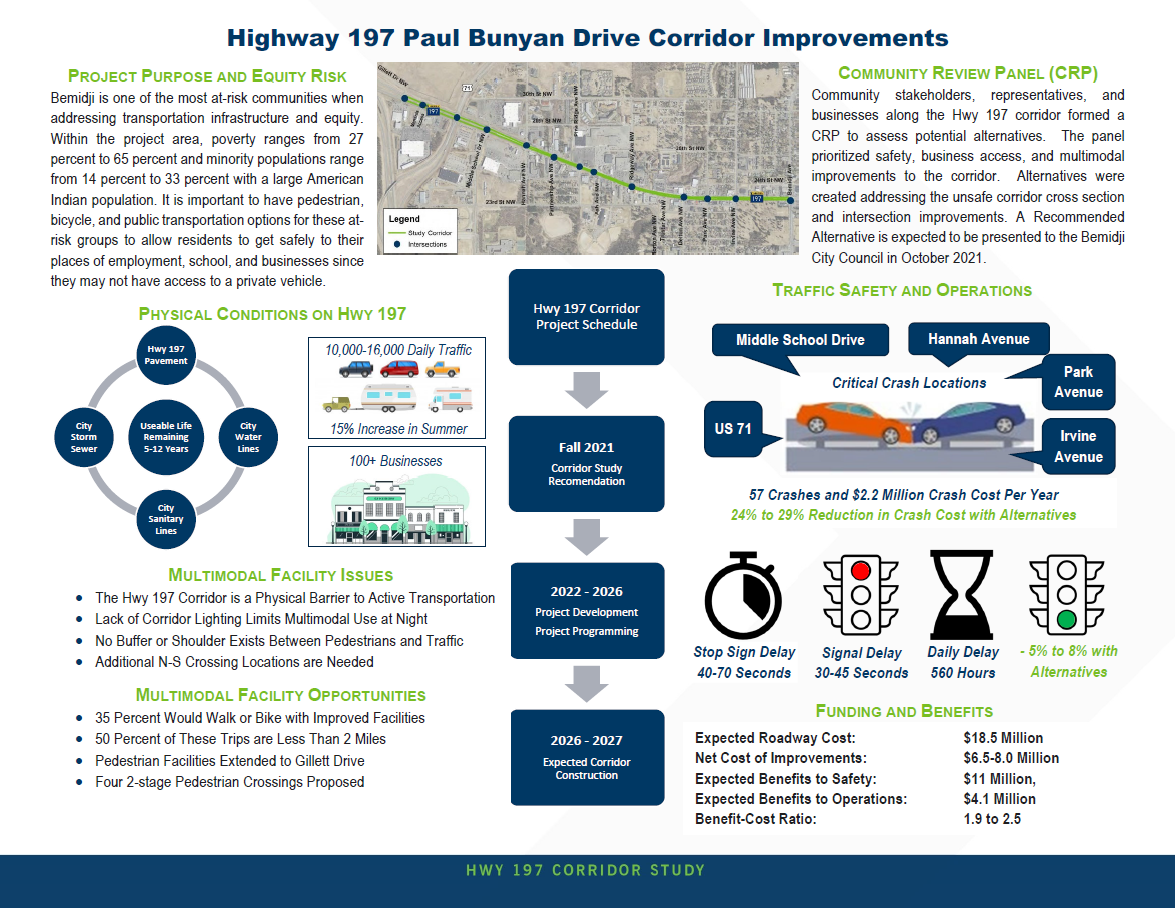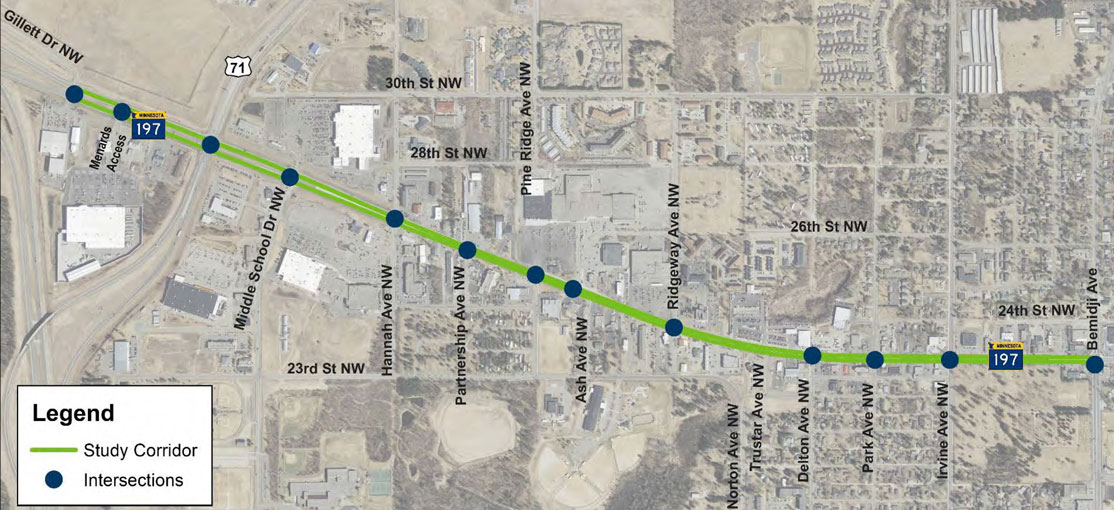Designing future Hwy 197 improvements

Highway 197 Corridor Study Information Sheet
Purpose of study

MnDOT is currently planning a project on Paul Bunyan Drive (Hwy 197) from Bemidji Avenue to Gillett Drive, to take place within the next 5-7 years. It currently serves an average of 10,000-16,000 vehicles per day and has a higher than expected crash rate.
Need for project
The corridor has a crash rate that is 30%-40% higher than similar corridors in the state.
- 577 total crashes over the last 10 years
- 161 crashes that involved injuries
- 6 severe (life-altering) crashes
Project goals
- Upgrade aging infrastructure
- improve traffic safety
- provide safe access for all users including motorists, pedestrians, bicyclists and transit riders
- Ensure that businesses on the corridor can prosper and thrive throughout future use
Improve traffic safety
Critical crash locations were identified at the US 71 intersection and segments between Bemidji Avenue to Park Avenue and Hannah Avenue to Gillett Drive. Historical crash data showed 45 crashes per year on the Hwy 197 corridor from 2011-2015 with a crash cost of over $1.6 million every year. The majority of crashes were either rear end or right-angle type crashes.
Improve traffic flow
Existing Traffic operations identified that unsignalized minor approaches and accesses east of Hannah Avenue were starting to see unacceptable delays during peak hours. Queuing from Irvine Avenue, Hannah Avenue, and Middle School Avenue was also identified as blocking adjacent access points. Traffic signal delays on the corridor increase travel times by 15 to 30 percent over free flow.
Future operations results showed continued degradation of minor approach unsignalized movements in delay and queue lengths. Future network delay increased by 13 percent for 2040 No Build and 31 percent for the 2040 Summer Rec. Future corridor average travel time increases were minimal ranging from 30 to 40 percent over free flow.
Severity of crashes on corridor from 2011-2015
| Severity of Crash | Occurrence | Crash Severity Frequency |
|---|---|---|
| Property Damage Only Crash | 124 | 68.89% |
| Possible Injury Crash | 43 | 23.89% |
| Non-Incapacitating Crash | 12 | 6.67% |
| Incapacitating Crash | 1 | 0.56% |
Types of crashes on corridor from 2011-2015
| Type of Crash | Occurrence | Crash Type Frequency |
|---|---|---|
| Rear End | 67 | 37.22% |
| Right Angle | 51 | 28.33% |
| Left Turn | 23 | 12.78% |
| Sideswipe - Same Direction | 11 | 6.11% |
Upgrade infrastructure
In addition to aging pavement, portions of the storm sewer, curb and gutter, and sidewalk are more than 50 years old. Portions of the sidewalks are not in compliance with the Americans with Disabilities Act (ADA) of 1990 and should be replaced. The signals at 23rd Street and Hannah Avenue are also approaching the end of their service lives.
Access for multi-modal use
This segment of highway is not pedestrian or bicycle friendly. There are currently no bicycle facilities and no shoulder, which pushes vehicles even closer to pedestrians. Where there are sidewalks, there is no boulevard, which puts pedestrians along the curb near the road. The excessive entrances along this segment are an additional barrier to pedestrians.
Community health concerns
Highway 197 is perceived as a dangerous road, which limits accessibility to sidewalks and, in turn, limits physical activity. It is estimated that meeting the national physical activity guidelines can reduce the risk of all causes of death by 30 percent. Most locations in town are a reasonable walk or bike ride away. With better infrastructure in place, people can choose to walk or bike instead of drive to their destination, leading to an increase in physical activity within the community. This will help decrease health issues experienced by community members and decrease money spent on health care.

